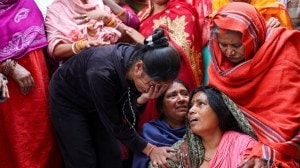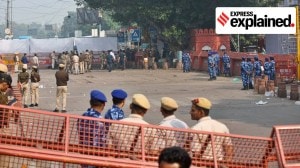When it comes to spin,left is right for Bangladesh
The cricketers that adorn the walls of school childrens rooms are,almost as a rule.
The cricketers that adorn the walls of school childrens rooms are,almost as a rule,either aggressive batsmen,express fast bowlers or flamboyant all-rounders,with the odd purveyor of freakish turn thrown in. Practitioners of the attritional art of left-arm spin seldom make good poster-boys unless youre from Bangladesh.
Of the four Bangladesh bowlers to have gone past the 100-wicket mark in ODIs,three are left arm spinners Mohammad Rafique,Abdur Razzak and Shakib Al Hasan. Rafique is the only Bangladeshi to achieve that feat in Tests. Since the start of the 2007 World Cup in which Bangladesh progressed out of the group stage for the first time ever,thanks to the efforts of Rafique,Razzak and Shakib left arm orthodox has accounted for nearly 44 per cent of the teams ODI wickets.
When the Tigers take on India in the opening fixture of the 2011 World Cup,they are likely to field another left arm trio Razzak,Shakib and Suhrawadi Shuvo. Why exactly does Bangladesh produce so many bowlers of this kind?
One school of thought sees Rafique as a pioneer who inspired a generation of cricketers to bowl left-arm spin.
In Bangladeshs early days in Test cricket,Rafique was often the sole bright spot in abject defeats.
When the Tigers occasionally ran big teams close,Rafique usually played the starring role seven wickets in the 2003 Multan Test,in which an Inzamam Ul Haq century helped Pakistan scrape home by a wicket,and nine at Fatullah three years later in a narrow defeat toAustralia.
In between,his five first innings wickets helped Bangladesh achieve its maiden Test win at Chittagong.
In Bangladesh,his status is like that of Imran Khan in Pakistan,or of Kapil Dev and Sachin Tendulkar in India, says Akram Khan,who captained a young Rafique in 11 ODIs between 1995 and 98.
Apart from Razzak,Shakib and Shuvo,Bangladeshs post-Rafique crop of left arm spinners also includes Test specialist Enamul Haque Jr. and Manjural Islam Rana,who died young in a motorcycle accident.
While it is tempting to think that they were all weaned on tales of Rafiques valour,it is equally likely that they inherited an older tradition.
Cricket coaching in Bangladesh only really started in the 80s, says Rabeed Imam,senior journalist and ICC Media Manager for the Bangladesh leg of the World Cup.
Most (right-handed) batsmen had a very right-hand dominant technique. Left arm spinners could exploit this and open them up,so they were very successful in the early domestic matches. Every team had at least one,and with that many around,you needed something extra to get picked.
It is a compelling theory. Bottom-handed players,who tend to play with a closed bat face,are vulnerable to the ball that leaves them. Since there are more right-handed batsmen than left-handers,and more finger spinners than wrist spinners,left-arm spinners tend to prosper in an environment dominated by bottom-handed techniques.
But is Bangladeshs surfeit of left arm spinners too much of a good thing in the international arena?
The reason why the three left armers were so successful in 2007, says Imam,is because all of them were a little different. Rafique relied on his accuracy and had a very good arm ball,Razzak bowled a quicker brand of left-arm spin,and Shakib was the classical one a little round-arm,but he bowled with a nice loop.
Shakib now captains Bangladesh,and Razzak,bowling with a remodeled action,is vital in the powerplays. It remains to be seen if the 22-year-old Shuvo can play the Rafique role in 2011. The early signs are promising while he has taken only eight wickets in 11 matches,his economy rate is under five an over. Like Rafique,he is reputed to be an effective lower-order basher.
The fact that Bangladesh will play all its group matches at home is another advantage. The general perception is that the wickets are slow and low,but if you have followed recent matches in Bangladesh,the danger comes more from the ball skidding on to the bat or from uneven bounce, says Imam. The Bangladesh spinners know these conditions very well,and they will be a threat.
Khan,however,thinks that conditions may not suit the spinners all that much. Since this is an ICC event,I expect the pitches to be quite flat, he says. Youll see scores of 260-270 in every game.
If that is the case,the seamers will also have to contribute. Nazmul Hossain,Shafiul Islam and the slingy Rubel Hossain are all raw,but can all make an impact on their day.
If this happens,opponents might be 50 for two rather than 70 for no loss when the spinners come on.
And that,to a team with designs of reaching the quarterfinals,might make all the difference.






- 01
- 02
- 03
- 04
- 05

























